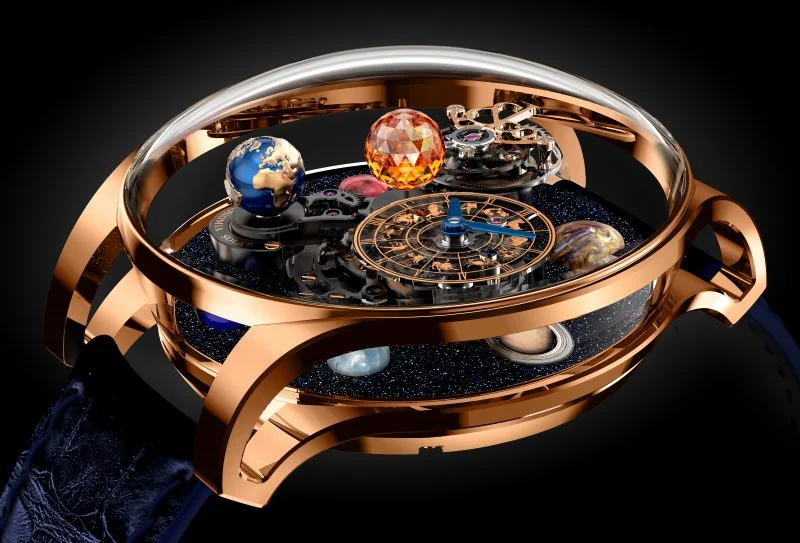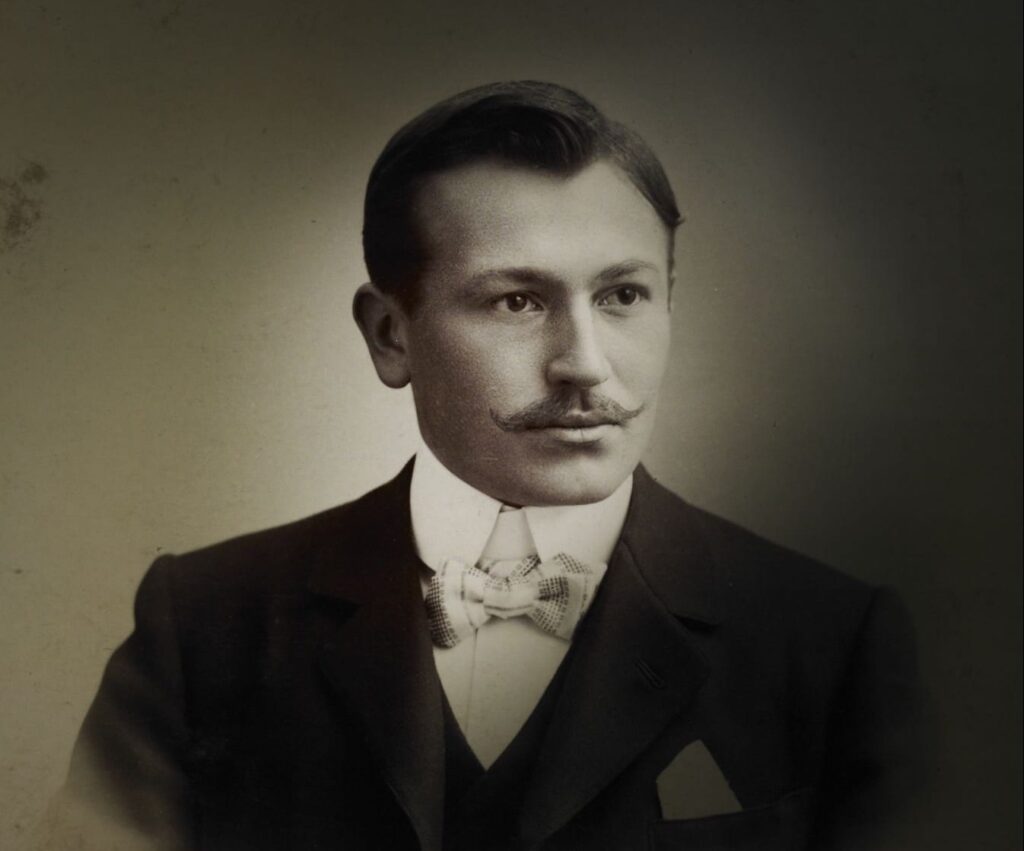Unveiling Swiss Watch History: Evolution Revealed

Key Highlights
- Swiss watchmaking has a long and rich, dating back to the 16th century.
- The industry experienced period of innovation and growth during the 19th century, thanks to the introduction of the ebauche system and the rise of complications in watchmaking.
- Swiss watches gained global dominance during the age of watchmaking, driven by Switzerland’s neutrality during World War II and the iconic brands that emerged during this time.
- The industry faced challenges during the quartz crisis but rebounded with the introduction of mechanical watches and a focus on sustainability.
- Today, Swiss watches continue to hold a prominent position in the global market, combining artistry, precision, and technology.
Introduction
Nothing says luxury and quality like a Swiss watch. For centuries, Switzerland has been synonymous with exceptional watchmaking, producing some of the most coveted timepieces in the world. The tradition of Swiss watchmaking has survived the test of time, evolving and adapting to the changing landscape of the industry. From the early pioneers to the modern innovations, the journey of Swiss watchmaking is a testament to craftsmanship, precision, and excellence.
Swiss watches have a reputation for being well-made, attractive, and long-lasting. When you buy a Swiss watch, you can be assured of an excellent purchase. But how did a small country like Switzerland come to dominate the watchmaking industry? The answer lies in the rich history and heritage of Swiss watchmaking.
The Dawn of Swiss Watchmaking

The tradition and craft of watchmaking in Switzerland date back centuries. In the 19th century, the Swiss watch industry emerged as a force to be reckoned with, driven by innovation and skilled craftsmanship. Nestled in the Jura Mountains, Switzerland became the epicenter of watchmaking, attracting talented artisans and entrepreneurs, including French watchmakers and the Waltham Watch Company, who would shape the future of the industry. The Waltham Watch Company played a crucial role in the development of the Swiss watch industry, introducing the American System of Watch Manufacturing and optimizing production processes. Without their contributions, Switzerland may not have become the watchmaking powerhouse it is today.
Origins and Early Innovators
Before the rise of Swiss watchmaking, inventors in Germany and other European countries were experimenting with portable timekeeping devices. In the second half of the 16th century, German clockmaker Peter Henlein is credited with inventing the first portable clocks, which were the ancestors of today’s wristwatches.
However, it was in Switzerland that watchmaking truly flourished. Daniel Jeanrichard, a Swiss goldsmith, introduced the concept of division of labor to watchmaking in the late 18th century. This innovative approach increased production volume while maintaining high quality, laying the foundation for the Swiss watch industry’s future success.
Influence of the French Huguenots
The Swiss watch industry received a significant boost from the influx of skilled watchmakers from France, known as the French Huguenots. These watchmakers were Huguenot refugees who fled France during the religious conflicts of the 16th and 17th centuries. They settled in Switzerland, particularly in the city of Geneva, bringing with them their expertise and knowledge of watchmaking. This influence from the French protestants played a crucial role in the evolution of Swiss watchmaking and solidified Switzerland’s reputation as a leader in the industry.
The influence of the French Huguenots on Swiss watchmaking cannot be overstated. Their craftsmanship and technical skills elevated the quality and reputation of Swiss watches. The city of Geneva, led by prominent Protestant reformer John Calvin, became a hospitable place for the French Huguenots and a hub for watchmaking, playing a crucial role in transforming Switzerland into the watchmaking powerhouse it is today.
The Innovation Era
The 19th century marked the era of innovation in Swiss watchmaking. Two significant developments during this period revolutionized the industry: the introduction of the ebauche system and the rise of complications in watchmaking.
The ebauche system, pioneered by Swiss watchmakers, allowed for the mass production of watch movements. This system standardized the production process, making it more efficient and cost-effective. As a result, Swiss watchmakers could produce watches in larger quantities, meeting the growing demand for timepieces.
At the same time, Swiss watchmakers began incorporating complications into their watches, such as chronographs, moon phases, and perpetual calendars. These added features elevated the status of Swiss watches, making them not just timekeeping devices but also luxury accessories.
Introduction of the Ebauche System

Swiss watchmakers recognized the need for a more streamlined production process to meet the increasing demand for watches. The ebauche system, introduced in the 19th century, revolutionized the industry by allowing for the mass production of watch movements.
The ebauche system involved the division of labor and standardized production methods. Different specialized craftsmen would work on specific components of the watch movement, which were then assembled by manufacturers. This decentralized approach increased efficiency and production volume, enabling Swiss watchmakers to meet the growing demand for their timepieces.
Thanks to the ebauche system, Switzerland quickly became known for its ability to produce high-quality watches in large quantities. This system laid the foundation for the Swiss watch industry’s success and positioned Switzerland as the global leader in watchmaking.
The Rise of Complications in Watchmaking

Alongside the advancements in production methods, Swiss watchmakers also focused on innovation and craftsmanship, introducing various complications into their watches.
One notable brand that embraced complications was Patek Philippe. Founded in 1839, Patek Philippe quickly gained a reputation for producing timepieces of exceptional quality and intricate complications. The brand’s commitment to excellence and technical innovation set the stage for the Swiss watch industry’s future success.
The inclusion of complications, such as chronographs, perpetual calendars, and tourbillons, showcased the technical prowess and artistry of Swiss watchmakers. These additional features made Swiss watches not only accurate timekeepers but also symbols of luxury and sophistication.
The Golden Age of Swiss Watches

Switzerland’s neutrality during the Second World War played a significant role in the country’s emergence as a global powerhouse in watchmaking. While other countries were grappling with the devastation of war, Switzerland remained relatively unscathed, allowing its watch industry to flourish.
During this golden age, iconic Swiss watch brands emerged, such as Rolex, Omega, and Patek Philippe. These brands became synonymous with luxury, precision, and timeless design. Swiss watches gained global dominance, capturing the hearts of watch enthusiasts around the world.
Swiss Neutrality and Global Dominance
Switzerland’s neutrality during the Second World War gave the country a unique advantage in the watchmaking industry. While other countries were focused on wartime efforts, Switzerland continued to produce high-quality watches, positioning itself as a reliable supplier in the global market.
The war also presented an opportunity for Swiss watchmakers to expand into new markets, particularly the United States. American soldiers stationed in Europe during the war discovered Swiss watches and brought them back home, sparking a demand for these timepieces. Swiss brands capitalized on this newfound popularity, establishing a strong presence in the American market.
Swiss watches became a symbol of quality and craftsmanship, further solidifying Switzerland’s position as the leader in the watchmaking industry.
Iconic Brands and Their Founding Stories

The golden age of Swiss watches saw the rise of several iconic brands, each with its own unique founding story.
One such brand is Rolex, founded by Hans Wilsdorf in 1905. Wilsdorf had a vision to create wristwatches that were reliable, precise, and durable. His dedication to innovation and quality propelled Rolex to become one of the most prestigious watch brands in the world.
Another influential figure in the Swiss watchmaking industry was Robert Hooke. Hooke’s inventions, such as the tooth-cutting machine and the balance-spring, revolutionized watchmaking and improved the accuracy and functionality of timepieces.
The stories of these iconic brands and their founders reflect the spirit of innovation and excellence that has defined Swiss watchmaking for centuries.
Crisis and Resilience
The Swiss watch industry faced significant challenges in the 20th century, including the quartz crisis and the emergence of digital technologies.
The quartz crisis, which began in the 1970s, saw the rise of inexpensive quartz watches from Japan and other countries. These watches, powered by quartz crystal movements, were more accurate, affordable, and required less maintenance than their mechanical counterparts. The Swiss watch industry struggled to compete with this new wave of technology, leading to a decline in Swiss watch sales and job losses.
In recent years, the industry has also faced threats from the rise of digital watches, particularly smartwatches. These devices offer features beyond timekeeping, such as fitness tracking and smartphone integration, posing a challenge to the traditional Swiss watch industry.
The Quartz Crisis: A Blessing in Disguise?

While the quartz crisis initially had a devastating impact on the Swiss watch industry, it also served as a catalyst for change and innovation.
The introduction of the first quartz watch, the Centre Electronique Horloger, marked a turning point in the industry. Swiss watchmakers realized the need to adapt and embrace new technology to survive. They began incorporating quartz movements into their watches, including the first wristwatch, combining the precision of quartz with the craftsmanship and design of Swiss watches. This innovation was further developed by Dutch scientist Christiaan Huygens, whose invention of the balance spring greatly increased the accuracy and quality of watches, paving the way for the modern water clocks and the evolution of Swiss watchmaking as we know it today.
The quartz crisis forced the Swiss watch industry to reevaluate its approach, leading to a renewed focus on quality, craftsmanship, and luxury. Swiss watches became more than just timekeeping devices; they became symbols of status, artistry, and timeless elegance.
The Swiss Response to Digital Threats

In recent years, the watch industry has faced new challenges from the rise of digital technologies, particularly smartwatches like the Apple Watch.
The Swiss watch industry has responded to these digital threats by emphasizing its unique selling points: craftsmanship, heritage, and tradition. Swiss watchmakers have embraced the digital world by incorporating smart features into their traditional mechanical watches, offering the best of both worlds.
Luxury Swiss watch brands continue to thrive by catering to a discerning clientele who value the artistry and heritage that comes with traditional watchmaking. While smartwatches may offer convenience and functionality, Swiss watches offer a timeless elegance and a connection to the rich history of watchmaking.
Modern Innovations

In the face of technological advancements, Swiss watchmakers have continued to innovate and evolve, staying true to their roots while embracing modern trends.
One significant development in recent years is the rebirth of mechanical watches. Luxury watch brands have focused on creating timepieces that showcase the artistry and precision of traditional watchmaking. Mechanical watches offer a sense of craftsmanship and a connection to a bygone era that cannot be replicated by digital devices.
Additionally, sustainability has become a key focus for the Swiss watch industry. Brands are implementing environmentally friendly practices, using sustainable materials, and supporting ethical production. The industry is recognizing the importance of preserving the environment and playing its part in creating a more sustainable future.
The Rebirth of Mechanical Watches

Mechanical watches have experienced a resurgence in popularity in recent years, fueled by a desire for craftsmanship, luxury, and a connection to tradition.
Luxury watch brands have embraced this trend, creating timepieces that showcase intricate mechanical movements, exquisite designs, and exceptional attention to detail. Mechanical watches offer a level of sophistication and artistry that cannot be replicated by digital devices.
The resurgence of mechanical watches has breathed new life into the watchmaking industry. Skilled artisans and watchmakers continue to hone their craft, pushing the boundaries of what is possible in mechanical watchmaking. The appreciation for these timepieces goes beyond mere functionality; it is a celebration of the artistry and precision that defines Swiss watchmaking.
Pioneering Sustainability in Watchmaking
As the importance of sustainability grows, the Swiss watch industry is taking steps to minimize its environmental impact and promote ethical practices.
Luxury watch brands are adopting sustainable manufacturing processes, using recycled or responsibly sourced materials, and implementing energy-efficient technologies. They are also investing in initiatives to reduce waste and carbon emissions throughout the production and distribution process.
The Swiss watch industry is committed to preserving the environment for future generations. By embracing sustainability, watchmakers are not only aligning themselves with consumer values but also ensuring the longevity and relevance of the industry in a changing world.
Swiss Watches on the Global Stage
Swiss watches continue to hold a prominent position in the global market, representing a blend of artistry, precision, and luxury.
Switzerland is the largest exporter of watches in the world, with Geneva and the Jura Arc region being home to most of the country’s 700 watch manufacturers. Swiss watches are renowned for their quality, craftsmanship, and iconic designs, making them highly sought after by watch enthusiasts and collectors worldwide.
The Swiss watch industry employs thousands of people and contributes significantly to Switzerland’s economy. With its rich history, commitment to excellence, and innovative spirit, the Swiss watch industry shows no signs of slowing down.
Switzerland’s Position in Today’s Market

Switzerland’s position in the global watch industry remains strong, with the country continuing to produce a significant volume of high-quality timepieces.
The Swiss watch industry is the third-largest exporter in Switzerland and contributes 1.5% to the nation’s gross domestic product. It employs approximately 59,000 people and supports a network of skilled artisans, watchmakers, and suppliers.
Swiss watches are known for their precision, craftsmanship, and attention to detail, making them highly desirable to watch enthusiasts and collectors. Despite the challenges posed by new technologies, the Swiss watch industry has adapted and evolved, leveraging its heritage and expertise to maintain its position as a global leader in the luxury watch market.
The Role of Swiss Watches in Fashion and Culture

Swiss watches have become more than just timekeeping devices; they are symbols of luxury, style, and sophistication.
Luxury watch brands collaborate with fashion houses, designers, and celebrities, further cementing their role in the world of fashion and culture. Swiss watches are often seen as status symbols, accessories that reflect one’s personal style and taste.
The timeless design and meticulous craftsmanship of Swiss watches make them coveted by fashion enthusiasts and collectors. They are not just functional objects but also expressions of individuality and an appreciation for the finer things in life. The rise of the pocket watch in the 19th century solidified the role of Swiss watches in fashion and culture, as owning a bespoke pocket watch spoke volumes about one’s high standing in society. Swiss watches continue to influence fashion trends and remain at the forefront of luxury and elegance.
The Craftsmanship Behind Swiss Watches
The craftsmanship behind Swiss watches is a testament to the skill, dedication, and passion of the artisans and watchmakers who bring these timepieces to life.
Swiss watches are crafted with meticulous attention to detail, combining artistry, precision, and technology. From the intricate movements to the exquisite designs, every aspect of a Swiss watch is carefully considered and executed.
The lever escapement, invented by Robert Hooke, is a prime example of the technical mastery found in Swiss watches. This mechanism ensures the precise and reliable timekeeping that Swiss watches are known for.
Training the Next Generation of Watchmakers (100-150 words, NLP terms: watchmaking schools, swiss watchmakers)
The tradition of Swiss watchmaking is passed down through generations of skilled watchmakers. Switzerland is home to several prestigious watchmaking schools that train the next generation of artisans.
These schools provide comprehensive training in watchmaking, teaching students the techniques and skills necessary to create high-quality timepieces. Students learn the art of assembling watch movements, crafting intricate components, and ensuring the precise functionality of each watch.
Swiss watchmakers take great pride in their craft and are committed to maintaining the highest standards of quality and precision. The training and education provided by watchmaking schools play a crucial role in preserving the heritage and expertise of Swiss watchmaking.
Artistry, Precision, and Technology
The artistry, precision, and technology in Swiss watchmaking are unparalleled. Crafted meticulously in the Jura Mountains, Swiss watches embody centuries of expertise. From the intricate movements to the exquisite detailing, each timepiece reflects a harmonious blend of tradition and innovation. Swiss watchmakers continuously push boundaries, incorporating cutting-edge technology while upholding the highest standards of craftsmanship. This fusion of artistry, precision engineering, and technological advancements sets Swiss watches apart as timeless masterpieces in the watch industry.
Training the Next Generation of Watchmakers

In response to the growing demand for skilled artisans in the Swiss watch industry, specialized programs are grooming the next cohort of watchmakers. These educational initiatives combine traditional craftsmanship with modern techniques, ensuring that future professionals are well-equipped to navigate the evolving landscape of watchmaking. By fostering a deep understanding of NLP terms like lever escapement and high-quality production standards, these training programs are vital in preserving the heritage and innovation that define Swiss watchmaking excellence.
Challenges and Opportunities
The Swiss watch industry faces both challenges and opportunities in the ever-evolving digital world.
One of the major challenges is the rise of smartwatches, which offer a range of digital features beyond timekeeping. The increasing popularity of smartwatches poses a threat to traditional mechanical watches, as consumers seek convenience and connectivity.
However, there are also opportunities for the Swiss watch industry to leverage digital technologies and adapt to changing consumer preferences. Luxury watch brands are exploring partnerships with technology companies and incorporating smart features into their traditional watches, offering a seamless blend of craftsmanship and connectivity.
The future of Swiss watchmaking lies in its ability to embrace innovation while staying true to its core values of quality, craftsmanship, and timeless design.
Competing in a Digital World
The rise of smartwatches has presented a new set of challenges for the Swiss watch industry. Smartwatches offer a range of digital features that cater to the needs of tech-savvy consumers.
To compete in a digital world, luxury watch brands are embracing technology while staying true to their heritage. Some brands have partnered with technology companies to develop hybrid watches that combine traditional watchmaking with smart features.
Market trends indicate that there is still a demand for traditional mechanical watches, especially among watch enthusiasts and collectors. Swiss watchmakers are tapping into this niche market by focusing on craftsmanship, exclusivity, and limited-edition releases.
The Swiss watch industry recognizes the importance of embracing digital technologies while maintaining the artistry and tradition that have defined it for centuries.
The Future of Swiss Watchmaking
The future of Swiss watchmaking lies in its ability to embrace innovation and adapt to the changing needs and preferences of consumers.
Swiss watchmakers are constantly pushing the boundaries of what is possible in watch design and functionality. They are exploring new materials, incorporating smart features, and embracing sustainable practices to stay ahead of the market.
The industry is also focusing on expanding into emerging markets, such as Asia, where there is a growing demand for luxury watches. By diversifying their customer base and exploring new markets, Swiss watchmakers can ensure the continued growth and evolution of the industry.
As technology continues to evolve, Swiss watchmakers will need to find the right balance between tradition and innovation. The future of Swiss watchmaking is bright, with the industry poised to continue its legacy of excellence and craftsmanship.
Conclusion
The evolution of Swiss watchmaking is a captivating journey through centuries of innovation and resilience. From its humble origins to the modern era, Swiss watches have not only embraced change but also set global standards for craftsmanship and precision. The industry’s response to crises and the revival of mechanical watches showcase a blend of tradition and modernity. As Switzerland continues to lead the market with iconic brands and sustainable practices, the future holds both challenges and opportunities in a rapidly evolving digital landscape. With a rich legacy of artistry and technology, Swiss watches stand as timeless symbols of excellence and style on the global stage.
Frequently Asked Questions
What Makes Swiss Watches Unique?
Swiss watches are renowned for their precision, luxury, and craftsmanship. The Swiss watchmaking tradition dates back centuries, and Swiss watches are known for their exceptional quality and attention to detail. They combine artistry with technical excellence, resulting in timepieces that are both functional and works of art.
How Do I Choose the Right Swiss Watch?
Choosing the right Swiss watch depends on several factors, including personal style, brand reputation, budget, functionality, and investment potential. Consider your own preferences and needs, research different brands and models, and set a budget that aligns with your expectations. Consult with a trusted watch expert to ensure you make an informed decision.
Can Swiss Watches Retain Their Value Over Time?
Swiss watches, especially luxury brands with a strong heritage, have the potential to retain their value over time. Factors such as market demand, brand reputation, and the watch’s condition can influence its resale value. Limited-edition and collectible watches may also appreciate in value over time, making them attractive investments.
https://web.archive.org/web/20100523071344/http://www.fhs.ch/en/swissm.php
https://www.fedlex.admin.ch/eli/cc/1971/1908_1915_1915/en
https://commons.wikimedia.org/wiki/Category:Swiss_Made
https://www.bloomberg.com/news/articles/2017-11-16/a-concise-history-of-the-quartz-watch-revolution

Leave a Reply